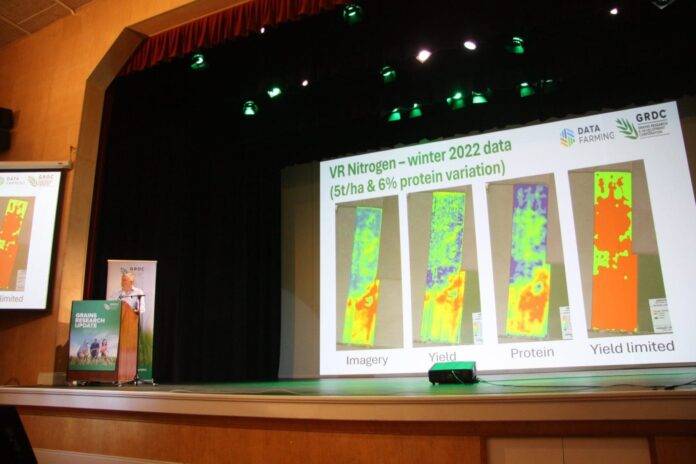As the co-founder and managing director of DataFarming, Tim Neale possesses a unique perspective on the cropping industry in Australia. Utilizing satellite imagery and engaging with growers, agronomists, and researchers, Neale highlighted the persistent issue of yield variability in paddocks with higher potential yields during his presentation at the Grains Research and Development Corporation Goondiwindi Update. He emphasized the importance of utilizing tools such as yield and protein data, EM and satellite mapping, targeted soil testing, and handheld technology to guide the implementation of variable-rate technology and improve performance in paddocks.
Neale expressed concern over the wide fluctuations in yields, ranging from 200-300 percent, and emphasized the need for more practical and user-friendly tools for growers and agronomists to access yield data on their phones. He stressed the industry’s failure in providing simple tools despite decades of yield mapping experience.
During his presentation, Neale highlighted the significant impact of yield and protein variations on the industry, citing examples from growers in different regions. From achieving a 1t/ha and 1% protein variation in wheat paddocks to facing a 5t/ha yield and 6% protein variation due to waterlogging, Neale underscored the urgency of addressing these issues to avoid a cost-price squeeze that could impact the industry’s competitiveness.
Neale emphasized the importance of precision fertiliser decisions in the current economic climate and suggested starting with electromagnetic (EM) mapping and targeted soil testing to rectify underperformance in paddocks. He also discussed the value of satellite imagery in providing real-time data and highlighted the increasing resolution and accessibility of satellite data, which can aid in understanding paddock conditions and making informed decisions.
Insights from satellite imagery and yield and protein data have led growers to adopt more targeted soil testing and variable-rate technology. Neale encouraged growers to view every farm as a research station and leverage technology to measure responses effectively on their own farms. He also discussed the challenges posed by mixed soils and the importance of understanding variability to optimize fertiliser applications.
Neale also touched upon the use of satellite imagery for weed detection, highlighting the potential cost savings and efficiency gains from using algorithms to create weed maps for spray units. He shared a success story of a grower who saved significant costs by spraying only the necessary areas based on the weed detection map.
In conclusion, Tim Neale’s presentation at the GRDC Goondiwindi Update shed light on the pressing issues of yield variability and the need for more advanced tools and technologies to address these challenges in the cropping industry. By emphasizing the importance of precision agriculture practices and leveraging data-driven insights, Neale provided valuable insights for growers and agronomists looking to optimize their crop management strategies.




